Dynamics and Control for Interplanetary Spacecraft
Design of interplanetary transfer trajectory in multi-body problem
Interplanetary Trajectory using Multi-Body Dynamics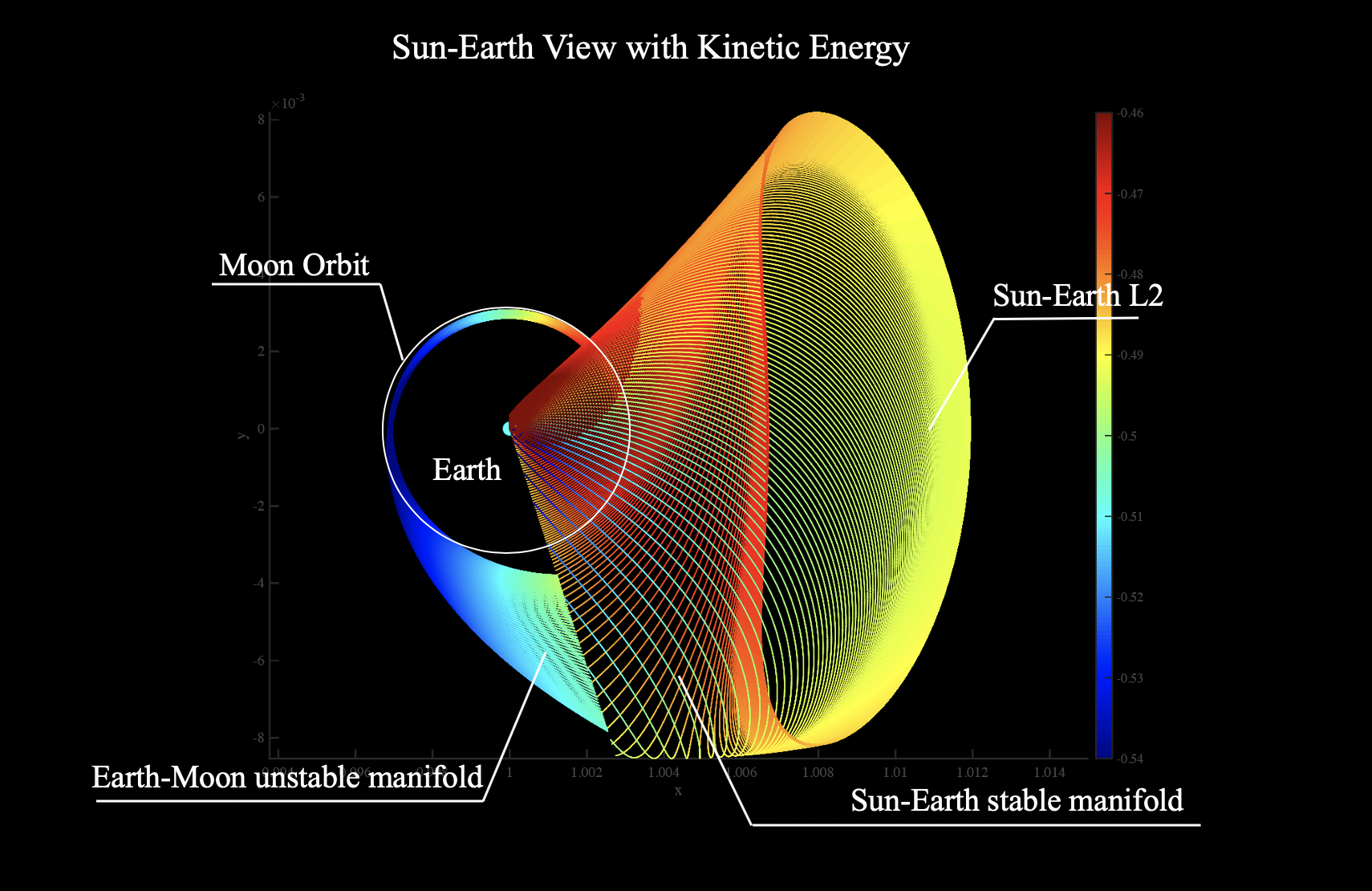
Trajectory optimization for low-thrust spacecraft
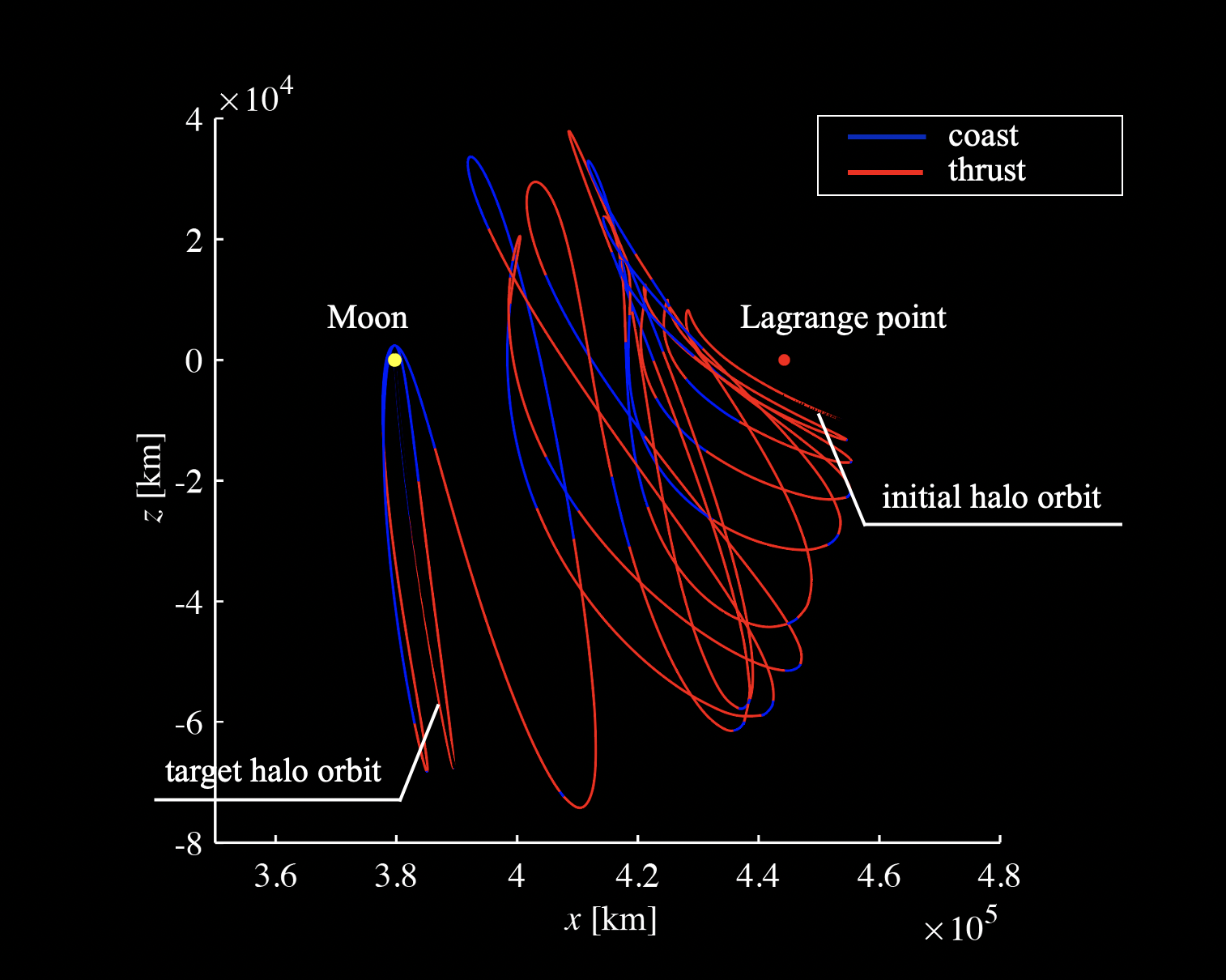
Low-Thrust Trajectory Optimization
In recent space exploration, spacecraft equipped with low thrust propulsion system such as ion engines has been received. Orbital design using low thrust propulsion has a high degree of freedom in solution, however, it is very difficult to optimize fuel consumption and flight time of spacecraft. Traditionally, optimal solutions have been calculated using nonlinear programming and optimal control theory. Not limiting to this framework, and we proposes a innovative trajectory optimization method using sparse optimal control and Riemannian manifolds to derive an optimal solution robustly at low computational cost, relying on mathematical optimization theory.
Trajectory analysis for asteroid mission
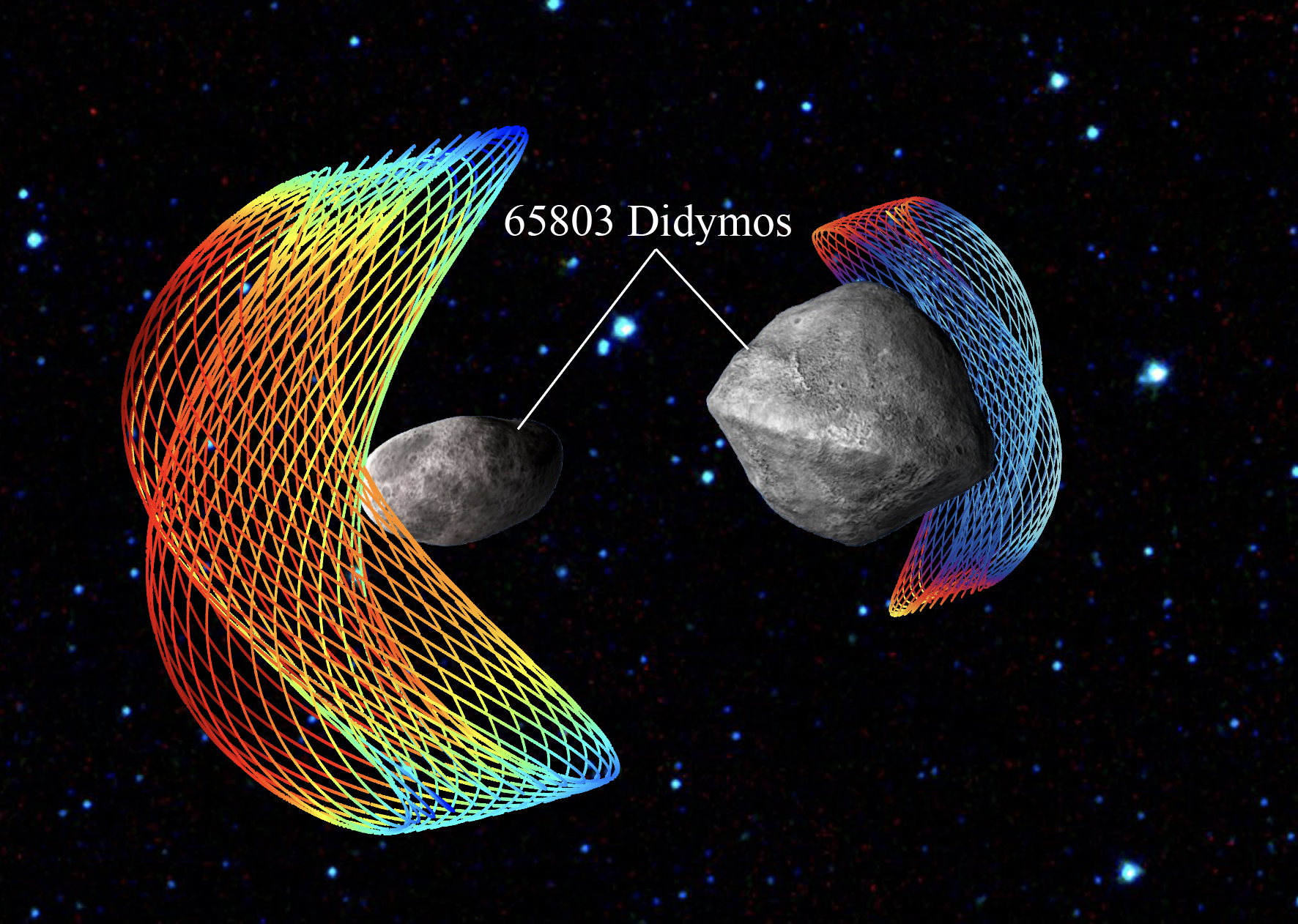
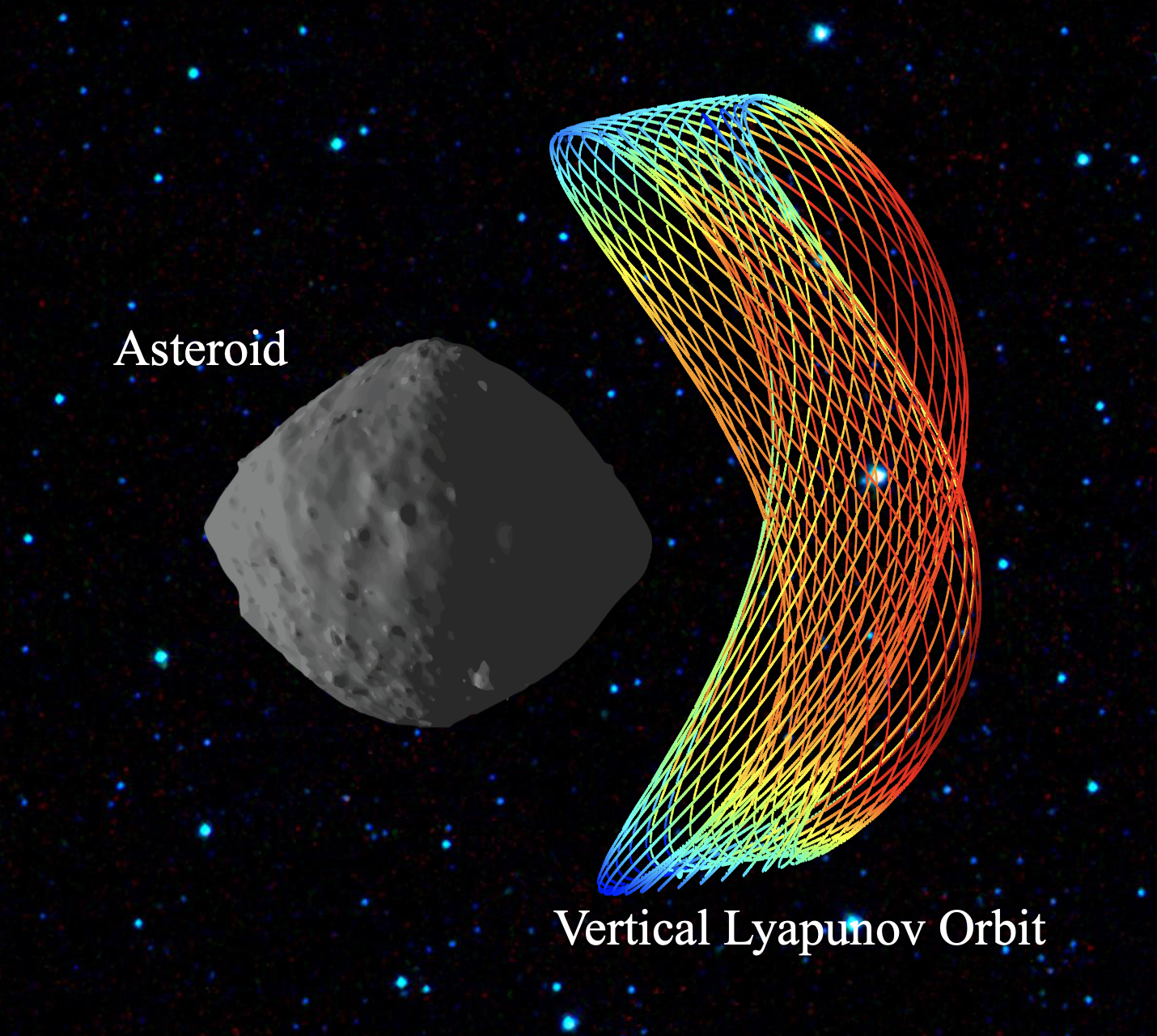
Asteroid Missions
Asteroid exploration mission has the scientific significance of revealing the process of the birth and evolution of the solar system. However, since the asteroid has a distorted shape, the gravitational field is complicated, and the effects of solar radiation pressure and perturbations due to the gravity of the sun become more significant than in planetary exploration, which makes orbit calculation difficult. In our laboratory, we develop and apply a new method to the trajectory design around an asteroid and investigate the usefulness of the method. Optimal landing problem for asteroid system is also the main scope of this research.
Formation flying control
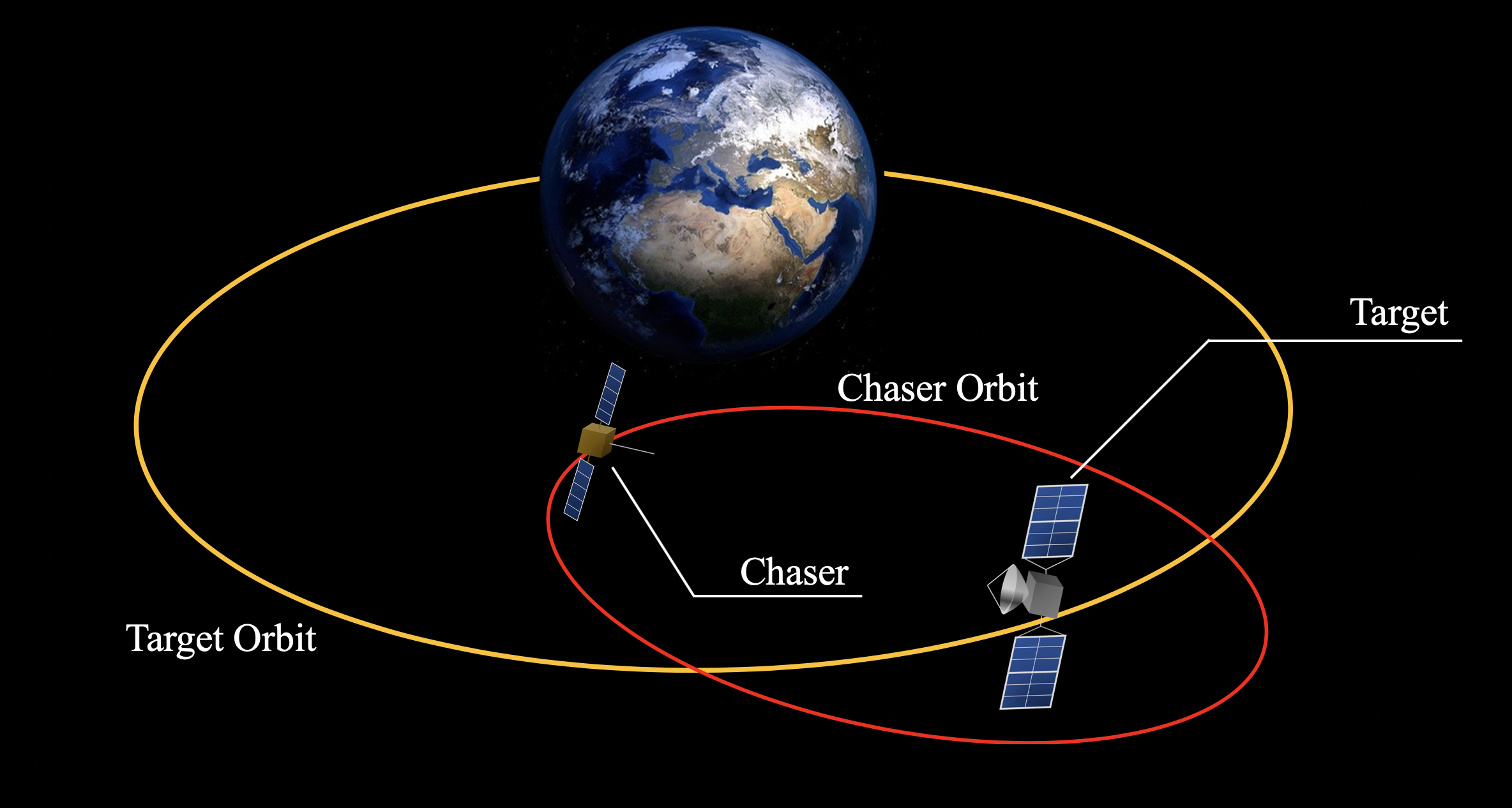
Formation Flying Mission
Formation flying of satellites has been an important research field in recent years because of its high applicability. The advantages of formation flying include the ability to distribute the functionality of a single satellite to multiple smaller satellites, eliminating the complexity of satellite design. In order to realize the formation flying mission, it is necessary to maintain the formation under the various constraint under the existence of perturbations. In our laboratory, we develop orbital control method to realize the formation flying mission: design of atmospheric drag controller which considers attitude constraints, study of optimal configuration geometry for formation reconfiguration based on optimal control theory.
Data-driven approach to nonlinear dynamical systems
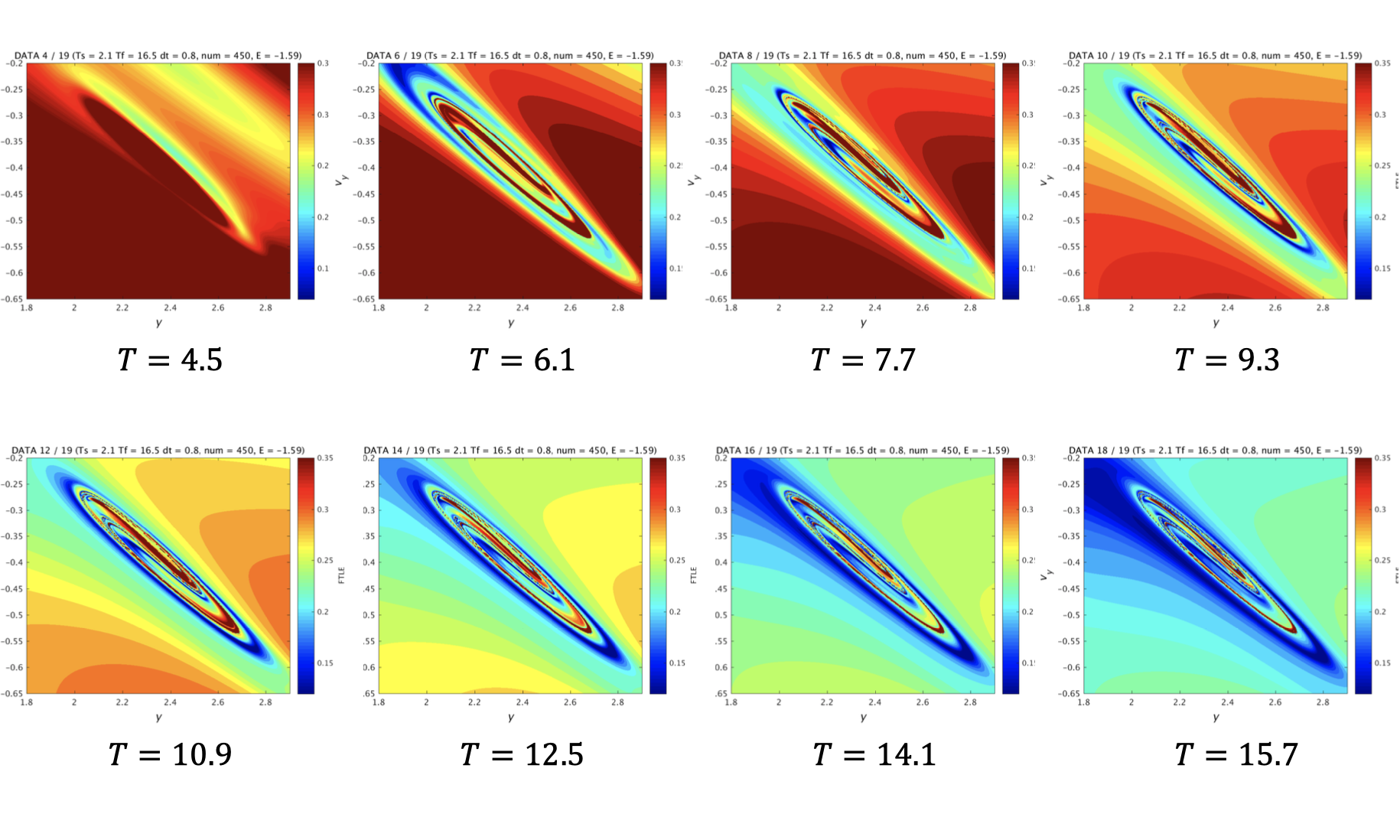
Finite Time Lyapunov Exponents Field
The motions of spacecraft are modeled as multibody dynamical systems, numerical integration of the equation of motion is the main tool of design and analysis. The purpose of this study is to analyze multi-body dynamical systems from time series data using a data-driven approach such as dynamic mode decomposition (DMD) and Koopman operator theory. So far, our laboratory has conducted research on the following two time series data.
- Measurement data in the linear and non-linear regions around the Lagrange point of the Earth-Moon circular restricted three-body problem
- Field data expressed by a finite-time Lyapunov exponent (FTLE) that represents the degree of separation between two particles placed in a dynamical system
In the future, we expand the data-drive paradigm to mission design, exploiting modern computer architecture such as parallel computing.
Earth-Moon transportation system using cycler orbit
In recent space development, manned lunar exploration has attracted a great deal of attention. Efficient transportation system to the Moon is necessary because many materials are required to carry out manned space activities. In our laboratory, a transport system using so called cycler orbit for stable and repeated round trips between the Earth and the Moon has been proposed. In particular, we are working on the design of a cycler orbit that combines multi-body problems and optimal control for transportation to the Gateway that will be a manned base near the moon in the future.